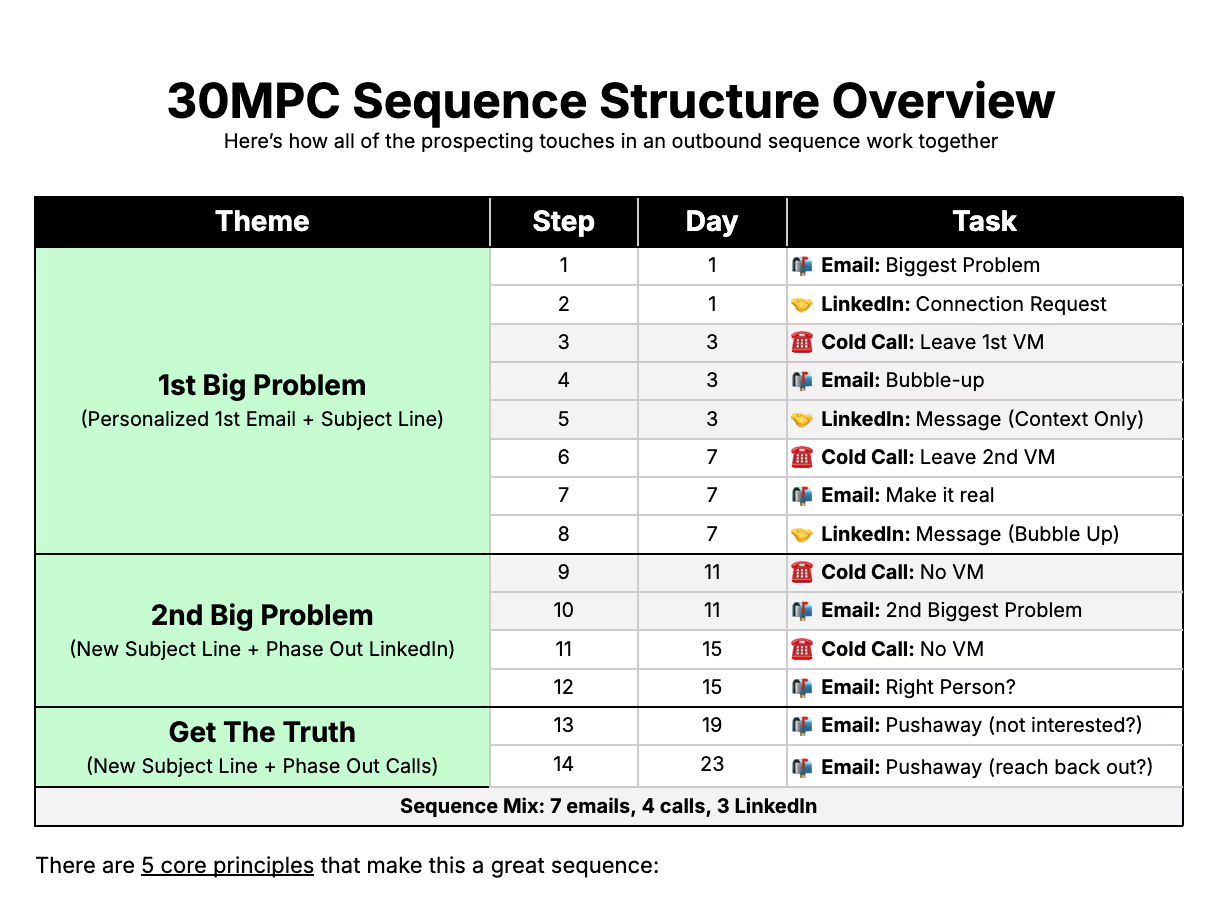When you're first learning to run discovery calls, you often learn that it's important to ask questions and get your prospect talking. And yes, that's true.
But if you've ever heard a prospect say:
- Why are you asking me all these questions?
- Sorry, but could you tell me exactly what you do?"(20 minutes into discovery)
- Can we just jump into the demo?
This is for you.
Sellers take it way too far and turn their discovery calls into interrogations. Well-balanced discovery feels like a give-and-take conversation where a prospect is learning as they share problems with you.
That means you need to insert your own stories and perspectives alongside theirs to demonstrate that you've seen their problems before.
So here are 4 ways I prevent death by interrogation in discovery calls:
- Vertical questions create conversation depth.
- Playbacks show that you can listen.
- Pile-ons show that you can understand.
- Parallel stories show that you can help.
#1: Vertical Questions
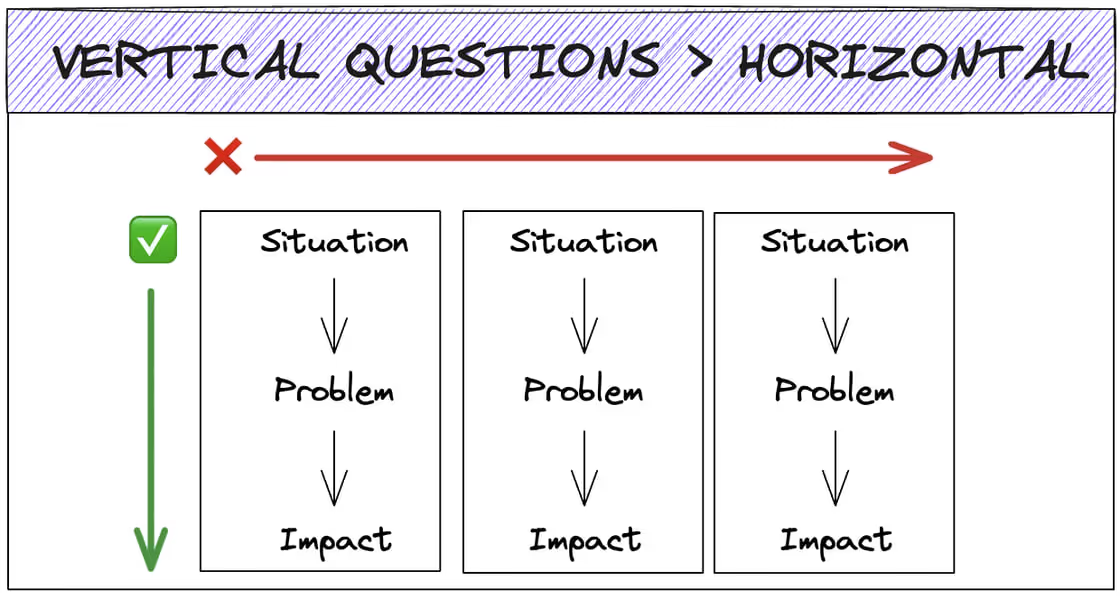
When I was the VP of Sales at Pave selling compensation software, the discovery calls that felt like interrogations often involved horizontal questioning like this:
- Topic 1: How do you manage your compensation reviews?
- Topic 2: How do communicate total rewards to employees?
- Topic 3: How you sell candidates on the upside of their equity?
- Topic 4: What systems are you using today?
Horizontal questioning is exhausting because each question literally has nothing to do with the previous one. Not only does this show that you're not listening, it also tends to not get you to any real business problems.
But vertical questions use the previous answer to build the next question:
- Situation: How do you run your compensation reviews? (they say spreadsheets)
- Problem: Typically when someone's on spreadsheets, they usually tell us it's takes too much time or they lack proper manager oversight. Which is it for you?
(they say it's manager oversight) - Impact Story: I have to imagine you didn't wake up and think your managers needed more oversight on comp. When was the moment your realized that was a problem? (they give a story about a compensation mistake)
Every answer they give allows you to understand the problem more deeply. It starts with a high level situation. Then a problem. Then a story to make that problem feel real.
Vertical questions are one key to great discovery. But if that's all you do, it still becomes interrogation. So you have to show that you're actively listening.
#2: Playbacks
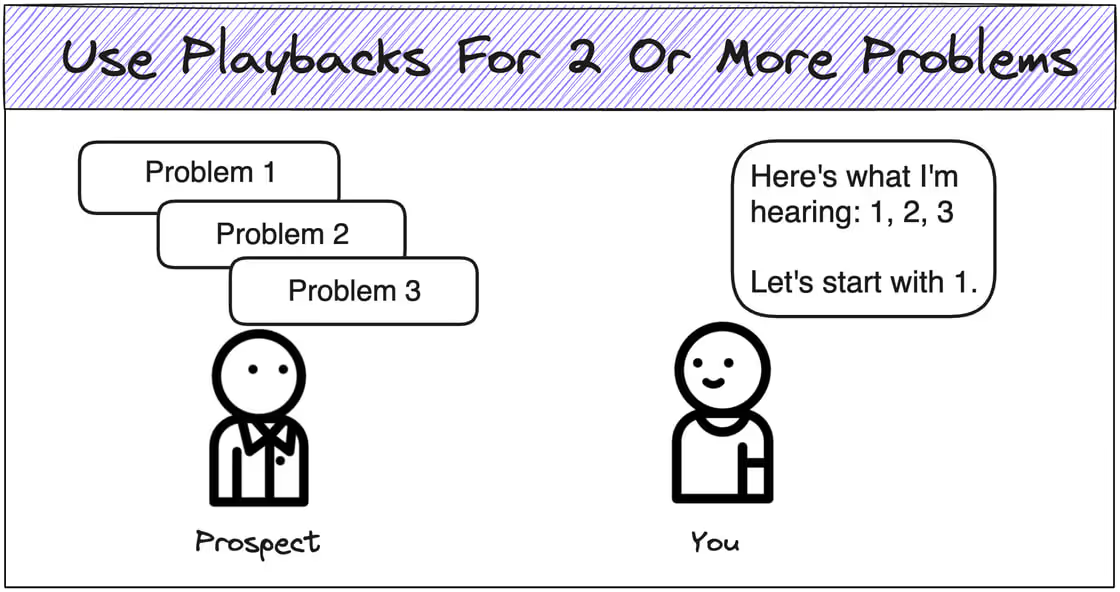
The playback is the most basic form of active listening. You paraphrase (or playback) whatever your prospect said to show that you heard them.
My rule of thumb is to do a playback whenever a prospect shares 2 or more problems in one extended monologue. This often happens at the beginning when you ask "why'd you take the call?" and they barf 3 random problems at the top of their mind.
When that happens, it's critical to recap what you heard because it shows them that you've confirmed receipt of all 3 problems, but then allows you to drill into the most important one without them feeling like you skipped the other two.
That could sound like this:
So hear's what I'm hearing: you're planning compensation on spreadsheets and that's taking super long, you're hiring 10 engineers this quarter, and you're feeling the pressure from FAANG recruiters on your employees.
We'll get to them all, but let's start with compensation planning.
Playbacks show that you're listening, but if that's all you use, it comes off as parroting. To show true understanding, you need to use pile-ons.
#3: Pile-ons
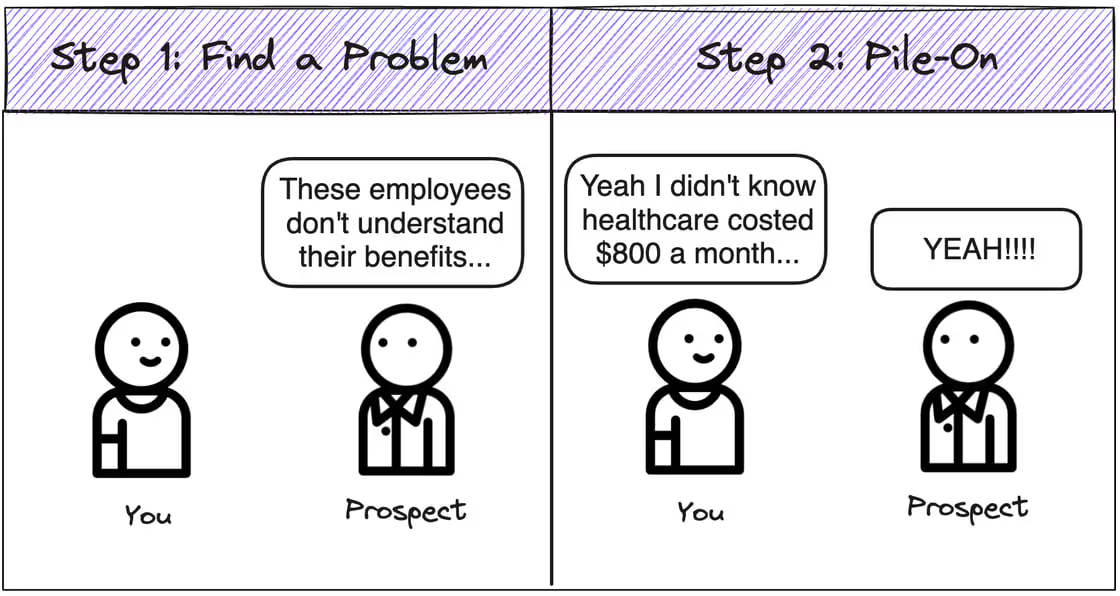
A pile-on is when your prospect shares a problem and you take it a step further. It's almost like you're continuing their sentence by giving an example of their problem to show them that you've seen it and empathize with it.
Going back to the compensation example, here's what a pile-on would look like:
Prospect (Problem): Ugh, these employees don't realize that we pay so much money for benefits and it's not just about salary!
Rep (Pile-on): I know. I remember the first time I got a cobra letter... it was freaking $800 a month for my own health care.
Prospect (Elated): I KNOW!!!!!
It's hard to get this right, but if you do, you'll see the lightbulb moment in your prospect's eyes where they think: finally... someone gets it!!!
Identify the top 3 problems your prospects share with you and try to have a mini pile-on for each. I used this same story every single time we dug into problems around employees not understanding their benefits and it always hit.
And once you show that you understand them, they'll finally be open to hearing how you can help: that's where you finish with parallel stories.
#4: Parallel Stories
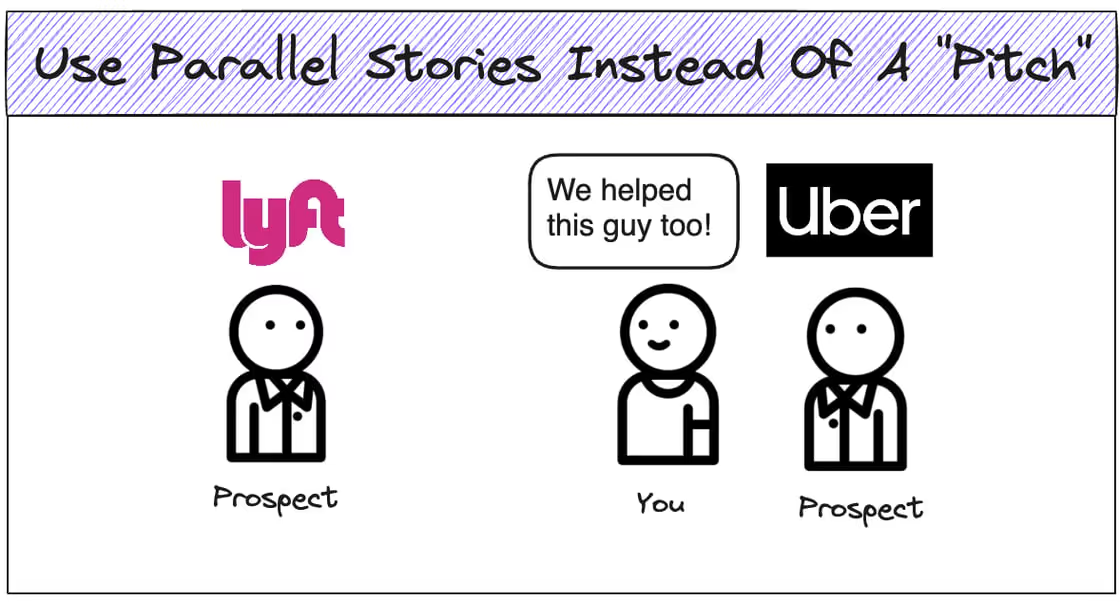
It doesn't matter if your prospect is writhing in pain at the end of the call if they literally have no idea how you can help them.
One way to show that you can help is through a "playback and pitch" where you repeat the problem and explain how you solve it.
But a parallel story is the most powerful form of a pitch: Once you get to a problem or painful story from your prospect, explain how you helped a similar customer solve the exact same problem.
For example, if I was selling to a company who just went public and was worried about losing all their employees to a big sell-off, I'd share something like this:
Well last year, we brought on [recent IPO customer] and we were able to build total rewards statements to educate employees on the fact that they had both liquidity and upside by showing them public company comparables at the $10B, $20B, and $50B marks.
Try to have customer stories for each of the major segments within your business. We had them for early stage companies trying to sell the upside of their equity, late stage companies trying to sell the future of an exit, and public companies trying to show the value of their total package and liquidity.
If you do this right, the product is implicit in the story. And that's the final step of discovery that doesn't feel like an interrogation: they should know exactly how you can help.
***
The last thing I'll leave you with: Practice all of these tactics in your ordinary life.
Mastering these skills has made me a far better conversationalist in general. Use the "when was the moment" question to get a friend telling a story. Pile-on to that story to show them you understood them. Share a story of your own to deepen connection.
Challenge yourself to have deeper conversations everywhere and it'll help you in both life and in sales.
Want more? Next week we're dropping our discovery playbook. If you haven't already subscribed to the Youtube channel, I'd definitely recommend catching it there next week because we plan to include visuals in that one :)



